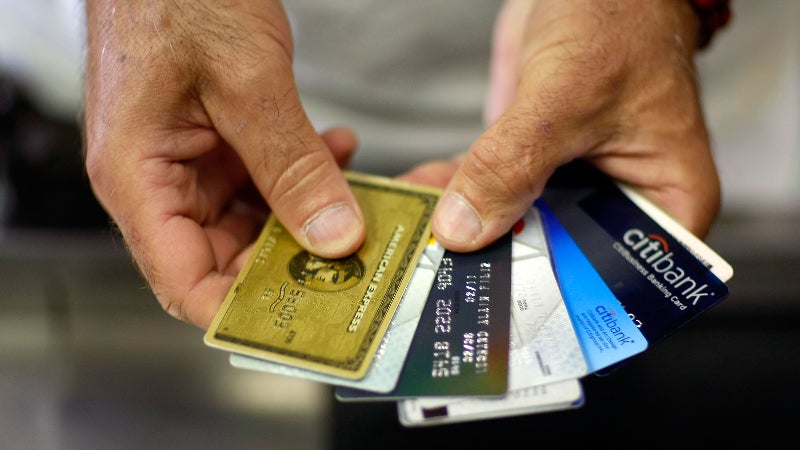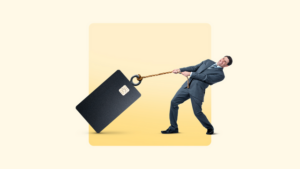As loans and credit card balances grow to record highs, consolidation loan balances see major spike

A recent TransUnion survey shows that while credit card usage spikes across the nation, so does borrowing in general. More particularly, unsecured personal loan usage for credit card consolidation.
The study, “Debt Consolidation in a Rising Economy” found that those who used an unsecured personal loan to consolidate their high interest credit card debt saw significant decreases in debt, but only in the short-term.
So what does this increased propensity to borrowing mean for consumer lending, especially in a high-rate environment? Experts say that increased targeted marketing and consumer awareness is key.
Consumers turn to swiping the plastic as inflation and rates skyrocket
As inflation grows to unprecedented numbers and interest rates rise to historic levels in 2023, American consumers have been turning to credit more than ever before. In August, the New York Federal Reserve reported that aggregate credit card balances grew to over $1 trillion, increasing by $45 million between the months of April and June.
Ted Rossman, Industry Analyst at Bankrate, says that this increased credit usage can be attributed to users understanding and taking advantage of their credit card rewards, as well as consumers using credit to make ends meet due to the increased cost of living caused by inflation.
“Just over half of cardholders avoid interest by paying in full each month, so credit cards are working for them, in terms of rewards and buyer protections,” Rossman noted in an August Bankrate debt study.
While many consumers are able to make those monthly payments, a recent Bankrate survey found that 47 percent of cardholders have reported carrying over their credit card balances, which is up from the 39 percent who reported doing so in December 2021.
More consumers turned to loans for credit consolidation in 2022, survey finds
This high-credit market, in tandem with inflation and increasingly high interest rates, has resulted in increased unsecured personal loan usage for credit card consolidation, the TransUnion study found.
From 2020 to 2022, the share of unsecured personal loans (UPLs) used for credit card consolidation increased by roughly 54 percent in Q3 2022 versus pre-pandemic borrowing levels in Q3 2019.
“As the Fed has raised interest rates in hopes of curbing inflation, many consumers have turned to unsecured personal loans as a way to consolidate their credit card debt to get a lower interest rate,” Liz Pagel, Senior vice president and head of TransUnion’s consumer lending businesses said.
“These consumers not only save on interest over time, but they also see an improvement in their credit scores,” she added. However for most, the decrease in credit was short-lived, lasting only about 18 months.
Over half of consolidators saw significant, short-lived debt declines
Between April 2021 and September 2022, 57 percent of those who consolidated saw a decrease in their overall credit card balances.
Unfortunately, what the TransUnion study found was that a majority of those with decreased balances had credit balances that had returned close to their previous labels within 18 months of consolidating.
Margaret Poe, head of consumer credit education at TransUnion comments on the efficacy of consolidating credit with a UPL to free up your budget while paying off debt. “However, it’s important to pair this with changes in spending habits to ensure the credit card debt doesn’t return” she advises.
Prime or above-risk borrowers saw continued credit increase
While most borrowers didn’t see a long-term reduction in debt, TransUnion found that borrowers who fell in the prime and above-risk tiers were more likely to see a continued net improvement in their credit after 18 months.
It was also found that those who opted to consolidate their credit card debt were more likely to fall within the prime or above-risk category, whereas those who refinanced and non-debt consolidators were weighted more toward the below prime category.
“Personal loans used to pay down other debts tend to perform better than the perusal loans used for a big purchase or something,” Pagel says. “It’s a savvy consumer,” she adds, explaining the average consumer who uses a loan to consolidate credit.
“It’s somebody who cares and is actively trying to manage their wallet and their monthly payments… You’re finding the consumers that already care about their monthly payments and they care about how much interest they’re paying,” she notes, adding that it’s self-fulfilling that these types of consumers seek these loans out to improve their credit.
Consolidators saw fewer reported delinquencies
Regardless of the risk tier, most consumers that made moves toward simplifying their debt repayment did see increased financial benefits. “Across all risk tiers, credit card consolidate and UPL refinancers had lower incidences of serious delinquencies over time when compared to non-debt consolidators,” the study’s market brief read.
Debt consolidators fair better overall, results find
Based on the type of consolidation, the risk tier and the long-term results, the study found that those who consolidated their high interest credit card debt have reaped more positive outcomes overall.
In TransUnion’s market brief, it stated that the survey clearly indicates that consolidators are a more attractive option for lenders. “They perform better on average than consumers who are not taking steps to consolidate debt,” it read.
How to manage high interest credit card debt
If you’ve turned to putting more purchases on credit and have had trouble with managing your debt, consolidating with an UPL can help you grow your credit and better manage your balance, but only with on-time payments and a positive long-term repayment history.
Keep in mind that personal loan rates have hit an all time high in recent weeks due in part to inflation. However, prequalify with multiple lenders to see your predicted rate. It’s likely that your loan rates will be much lower than your credit card interest rates.
Regardless of the repayment method you choose, Lily Liu, CEO of Pinata, advises consumers to fully understand their debt and its potential impact on long-term credit health. “Whether it’s personal loan debt or credit card debt, it always has a hard ticket price,” she says.
Craft a repayment plan to avoid lingering debt and credit damage
Liu goes on to explain the importance of understanding the details about your specific type of debt and the interest accrual so you can create a repayment plan that works for you and not face the potentially long-term impacts of unpaid debt on your credit.
“Unlike a lot of things, it’s not in your face everyday,” she says in reference to borrowers’ credit score and history, urging borrowers to make a repayment plan to minimize potential damage. “Debt has one of the biggest impacts [on credit] and it’s weighted differently with the credit bureaus.”
“So unlike another recurring non-debt payment that’s reported to the bureaus, a personal loan and credit card debt will have one of the biggest impacts on your credit score,” she adds.






